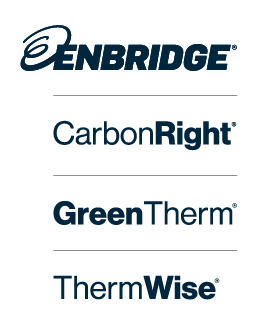Recently, Ski Utah asked our readers what type of content we should produce this winter. You spoke up and voiced the need for more GEAR related posts. We took your feedback to heart and in this first installment, we've teamed up with Eider to answer and give guidance on what jacket and insulation is best for you.
Straight from the pros, here's what Eider has to say about Insulation:
New technologies, proprietary names, and head-spinning marketing campaigns can make selecting an insulated jacket DOWNright frustrating. (See what we did there?). We’re here to help you make sense of it all. It’s true. If it weren’t our job to design jackets, we’d probably be confused, too! But selecting the proper type of insulation can make or break your cold-weather outdoor experience, so if you plan on spending time outside this winter, use this guide to help you select the insulated jacket that’s right for you.
First thing’s first: it’s important to understand that insulation is actually all about air. The more air that is trapped in between down clusters or polyester filaments, the warmer and lighter the jacket will be.
Next, we think it’s easiest to think of the world of insulation like “families”…who they are, the types of activities they excel at, and how they’re related to one another.

There are insulation suppliers, like Primaloft, Thinsulate, and Polartec, to name a few. And then most apparel manufacturers also develop their own proprietary insulations, along with their own names for them as well. They don’t do this to confuse you, but rather to help save on costs or to improve the design to their liking, thereby offering you, the end customer, a better selection of choices. So while there are seemingly bagillions of types of insulations to choose from, if you understand that they all fall under one of the above families and know the qualities of each, your selection is simplified and you’re practically an expert!
DOWN
Who are they?
Made from a mix of down clusters (also called “plume”), and feathers. Plume, the undercoating found beneath feathers, is three-dimensional and lofty, while feathers are two-dimensional and can sometimes poke through fabric. When you see a ratio written in the description, this is what it’s in reference to, and the higher the ratio, the higher the quality. So when you see a jacket that states its insulation as “90/10 duck down”, it means 90% plume and 10% feathers.
Fill-power is the other measurement you should understand when considering a down jacket. This is the measurement of loftiness, or how many cubic inches one ounce of down can fill, and typically falls between 600-800 for jackets. Bottom line, the higher the number, the better the warmth-to-weight ratio.
Thumbs up:
- Best warmth-to-weight ratio
- Excellent compressibility
- Exceptionally lightweight
- Natural
- Loses warmth when wet
- Slow to dry
- Expensive
- Low activity in extremely cold and/or dry conditions
- Polar expeditions, camping, trekking, recreational skiing, sightseeing, traveling
Think of the Down family as the trusted, old-school experts in the neighborhood, who have bone-chilling stories of camping in the Wasatch backcountry during the winter of ‘93.
SYNTHETIC
Who are they?
Synthetic used to mean one thing – poly fill. It was originally designed to mimic the warmth of down, while improving the areas of down’s weaknesses – maintaining warmth when wet, and cost. In recent years, new technologies have been introduced to improve synthetic’s structure and performance, so now this family has two offspring: Classic and Active.
The Classic family is comprised of long and short fibers that all connect together to form a sheet of insulation. Think of this family like the loveable Griswolds - that all-American, tried and true family who enjoys fall hikes on Mt. Timp and family ski days at Solitude.

- Remains warmth when wet
- Quick-drying
- Lower cost
- Heavier and bulkier than down
- Less durable
- Moderate activities in cold and/or wet conditions
- Resort skiing, light backcountry skiing, trekking, snowshoeing, sightseeing
Examples: Thinsulate, Primaloft Black, Primaloft Silver, ELoft
The Active family is the more modern synthetic sibling, designed to retain the above strengths of down and synthetic, while improving breathability for high-output, stop-and-go activities. There are several varieties on the market with varying structures. They are the family who makes you tired just looking at them – waking at 3am for Mt. Superior dawn patrol and closing the day with a “quick” 10k sunset trail run. Do they ever stop? No…no they do not.

Thumbs up:
- Highly breathable
- Remains warm when wet
- Very quick-drying
- Compressible
- Not as warm
- Can be expensive
- Intense activities in cold conditions or moderate activities in mild conditions
- Trail running, ski touring, freeriding, fast hiking
Examples: Polartec Alpha, Primaloft + Migration Resistance, Primaloft Gold
HYBRID
Who are they?
You can probably guess this one by now - the Hybrid family is the combination of down and synthetic, designed to maximize the benefits of both. Ratios of each ingredient vary, depending on the intended use of the jacket. The Hybrid family are like the newcomers to the neighborhood that everyone is intrigued by. They easily adapt to their surroundings, be it skiing Alta’s diverse terrain or climbing in Little Cottonwood Canyon, and are seemingly good at everything they do.

- Highly versatile
- Thermoregulation
- High warmth-to-weight ratio
- Fast drying
- Not suitable for extreme conditions
- Static to moderate activities in cold conditions
- Resort skiing, light backcountry skiing, trekking, snowshoeing, travel
Examples: Primaloft Down Blends
So there you have it! Now that you’re an insulation genius, all you have to do is pick your favorite colors and and you’ll be all set to #LOOKGOOD_FEELGOOD throughout what is sure to be a fantastic winter season!















